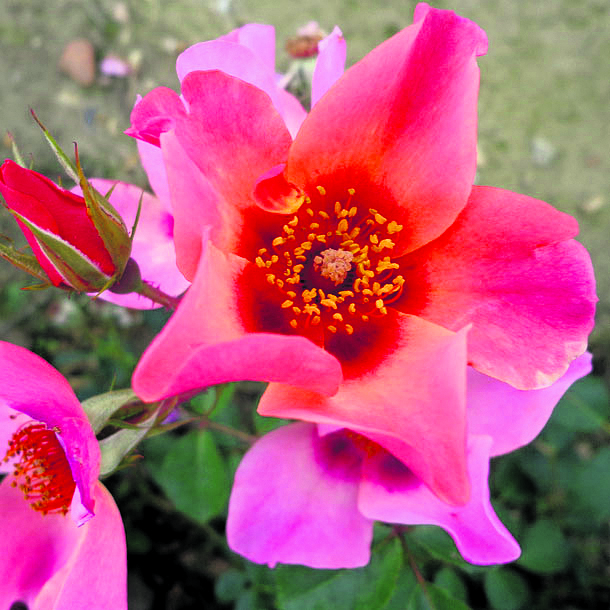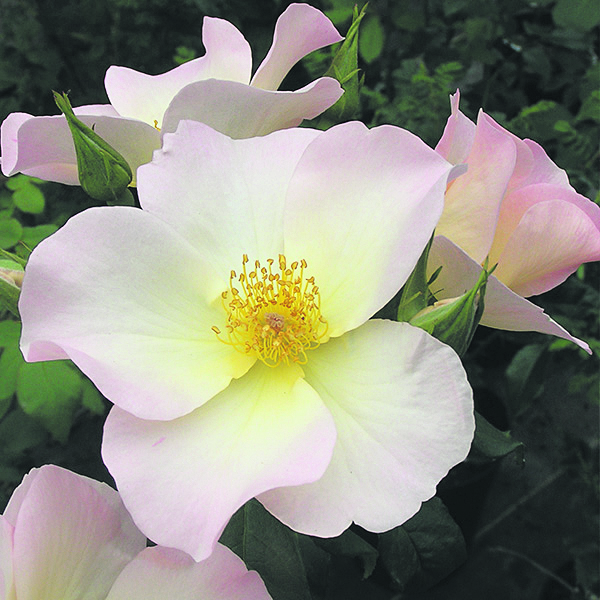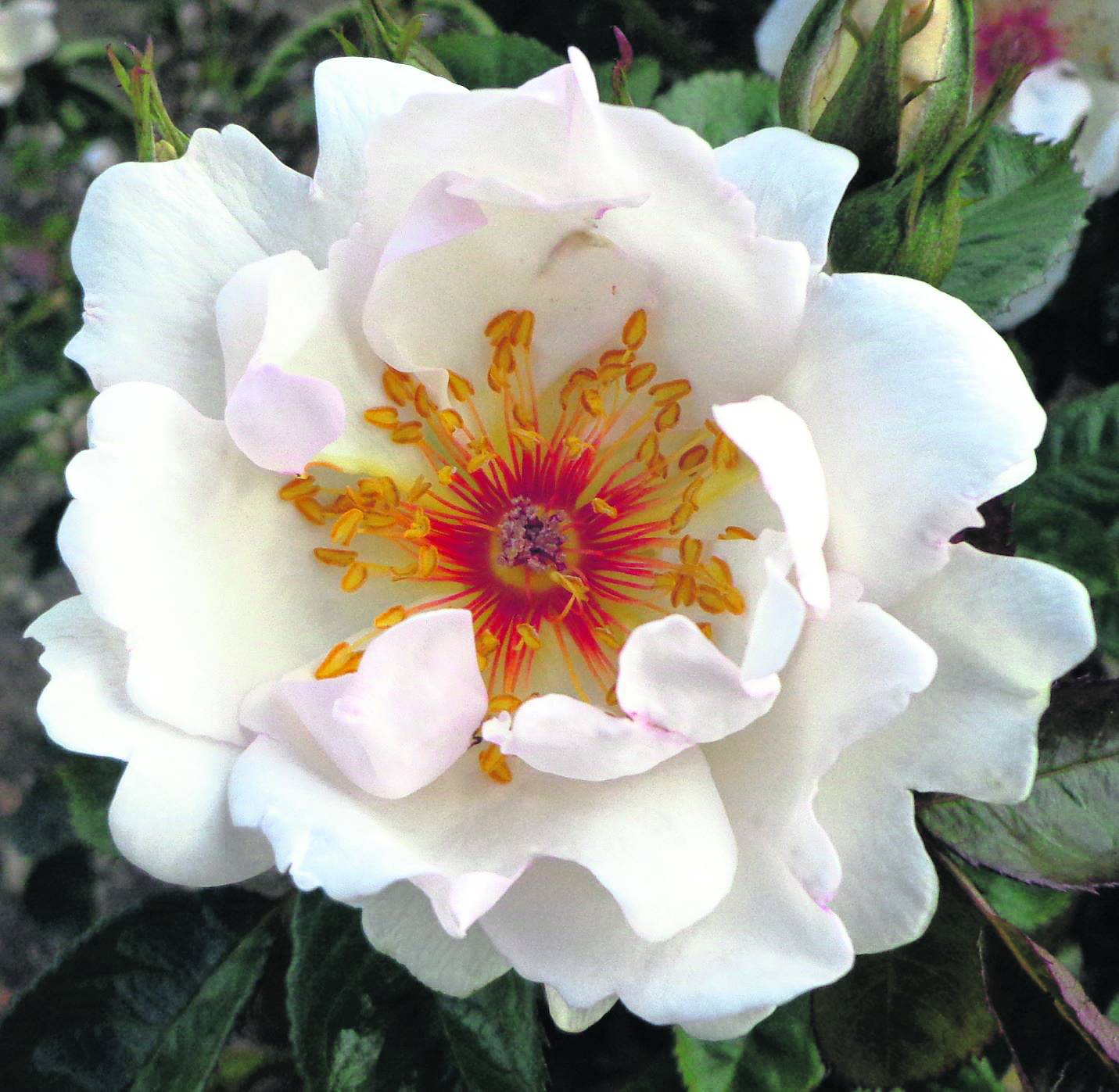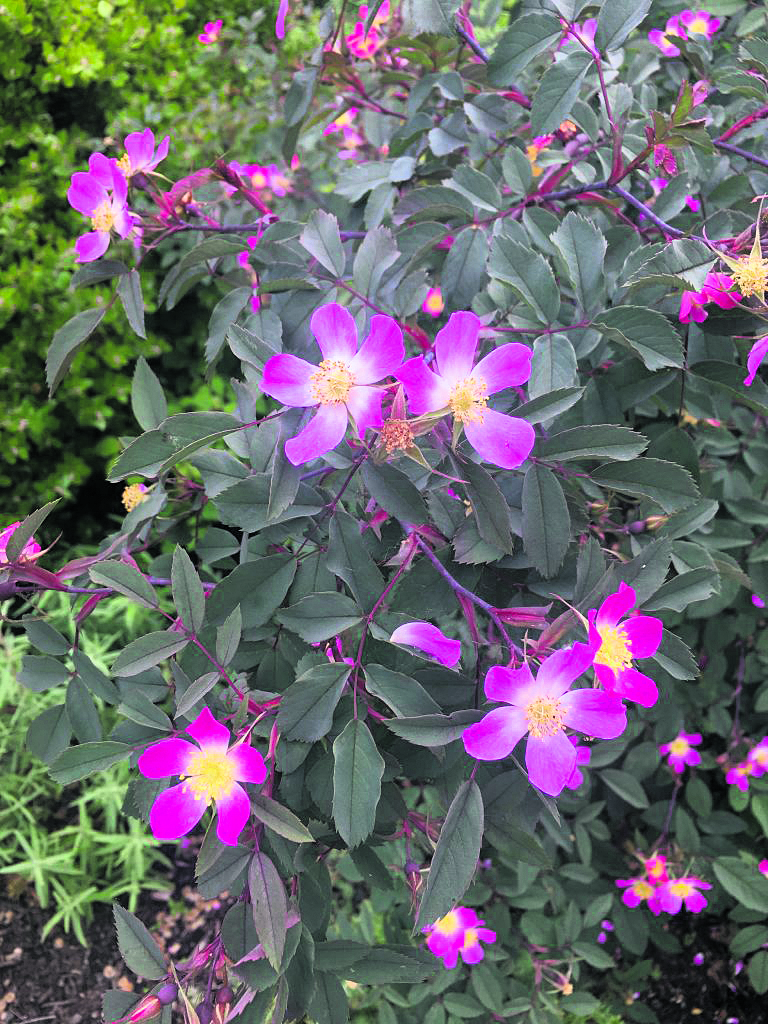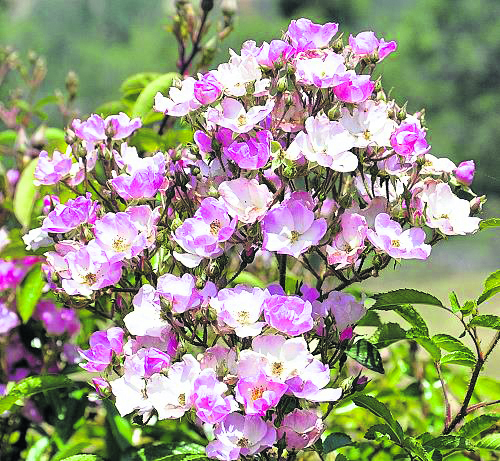Bees love the easy access to these single flowered petal roses which offer a more natural option for the rose lover.
More gardeners than ever before are succumbing to the delights of a single rose flower whose origins are in the natural simplicity of the wild rose.
But that’s nothing to the passion shown for these roses by bees who find it so much easier to access the pollen than from working through the density of traditional hybrid roses.
So, the single rose can enrich our gardens in more ways than one and complete successfully with the often too blowsy and back spotted hybrid teas.
The modest blooms of single-flowered roses have a simplicity and perfection all their own, as well as being easy to maintain and accessible to pollinators. Single roses have quite a story to tell.
Their origin is in the wild roses in our hedgerows where a dozen varieties of simple five petal roses have been found and loved for decades.
Over the years plant breeders have taken the simplicity of the wild rose with a long and prolific flowering season, disease resistance and new colours to create a whole new genre of roses which gardeners have taken to with a passion.
Why should this be? Perhaps it is that many rose lovers are looking for something more natural, relaxed and harmonious and insect friendly. The blowsy blooms and intense flowering of many of the hybrid teas perhaps belong to a bygone era.
Another benefit of the single rose is the wonderful crop of hips which follow in the autumn adding another dimension to growing them — deadheading of course isn’t necessary.
Cultivation of single roses
In the right conditions, roses can be very long-lived plants, and can even become coveted heirlooms, passed from one generation of gardener to the next. When planting a new rose, it is important to remember that it needs a chance to find its feet. Plants will often take a few years to build up a good foundation of roots before they show signs of vigour above ground and begin producing quantities of new wood and flower.
When to plant single roses
Roses are normally bought in winter, dormant and bareroot, or at any time of the year as a container plant (although an early winter planting is best for all but the most tender types). It is vital when planting to add compost to the planting hole and mix it properly with the surrounding soil. Make the hole ample enough to sensibly accommodate the roots without having to bend them to position the plant at proper depth. Soil should be firmed around the roots so the plant does not rock or sit too wet. During this formative period, it is important the rose is given space to breath and is not swamped by neighbouring plants. Once established, the strong, forked rose roots are extremely competitive against those of other plants.
Where to plant single roses
It is much nicer to grow roses in a mixed border, rather than corralled into a bed with their own kind where diseases can spread like wildfire. Roses are often quite shapeless plants, and allowing them the support from a surrounding sea of herbaceous plants is much kinder. Most of the growth is concentrated on the upper part of the plant, leaving bare legs towards the base, but this can be disguised by planting roses with perennials, such as geraniums or phlox. Rose roots tend to descend quickly and deeply and are not particularly spreading, making them ideal bedfellows for shallow-rooting perennials.
So what defines a single rose flower?
A single rose flower normally has five petals. This applies to all roses – climbers, ramblers and bush roses. Five, is the number of petals that the family group (Rosacea) has.
However! As plant breeders have come to realise our absolute fascination with this group of plants, the rose has developed from the original wild hedgerow ‘Dog Rose’ into semi double and fully double blooms which are the norm today.
The ‘single’ rose – as with its nearest cousin the ‘semi-double’ rose, has petals that open out wide, showing off the stamens. For insects/bees to find, for them to pollinate the flowers.
Some popular options for single roses
Rosa ‘Dortmund’
This rose produces large, red flowers with a conspicuous white eye in succession throughout the summer – they are so big it takes only a few to make an impression. It can be grown as a climber or shrub.
Rosa ‘For Your Eyes Only’
Derived from the unusual Rosa persica, which is a native of central Asia, this hybrid has proven to be a successful, easy-to-grow garden shrub. The striking flowers have a dark, central, claret blotch bleeding into the pink petals, and it will flower all summer.
Rosa ‘Sally Holmes’
A large, free-flowering shrub that produces sumptuous panicles of blush-white flowers all summer. Deadheading will speed up repeat flowering and keep the display tidy, trouble free, and with little scent – more a feast for the eyes than the nose.
Rosa ‘Jacqueline du Pré’
Named for the famous cellist, this rose produces clear-white, semi-double, scented flowers on strong, prickly stems. At the centre of each bloom is a cluster of delicate-pink filaments and gold anthers that stand out against the white petals.
Rosa ‘Glauca’
A vivid deep pink rose with pale almost white centres. What defines this rose is the wonderful red hips in autumn.
Rosa ‘Ballerina’
A prolific ground cover rose with rich pink flowers which open from May throughout the autumn and are long living.
